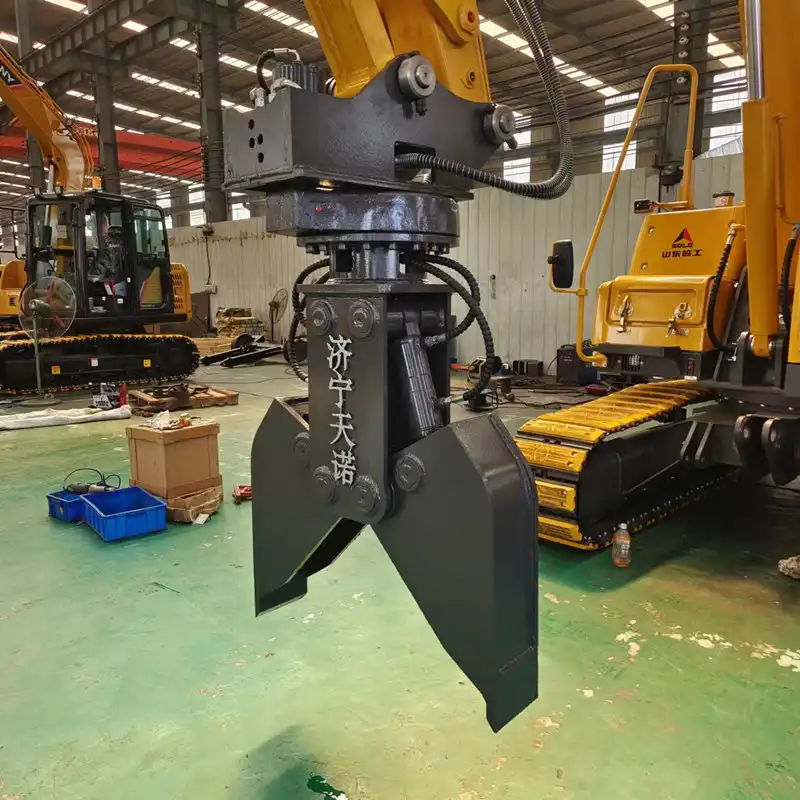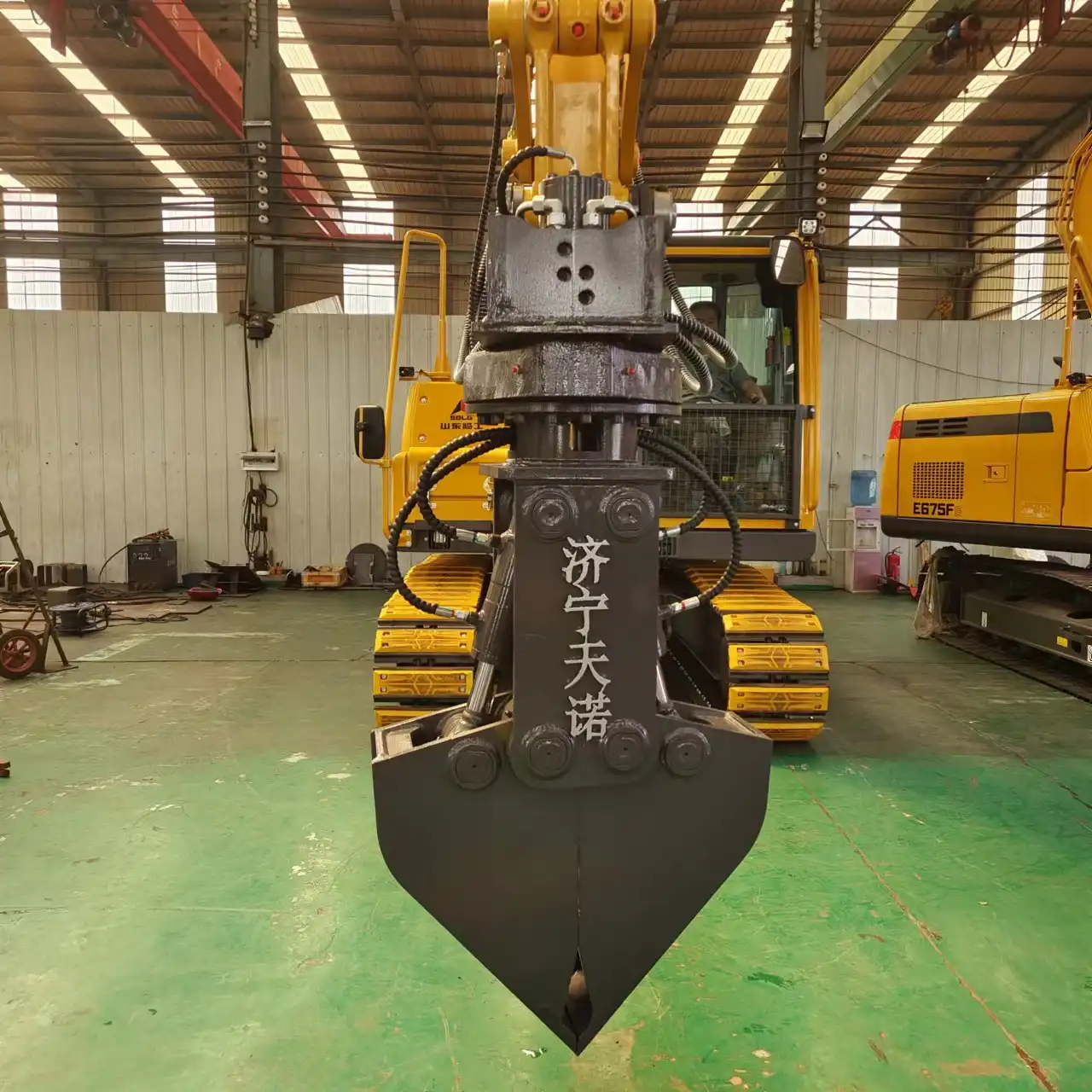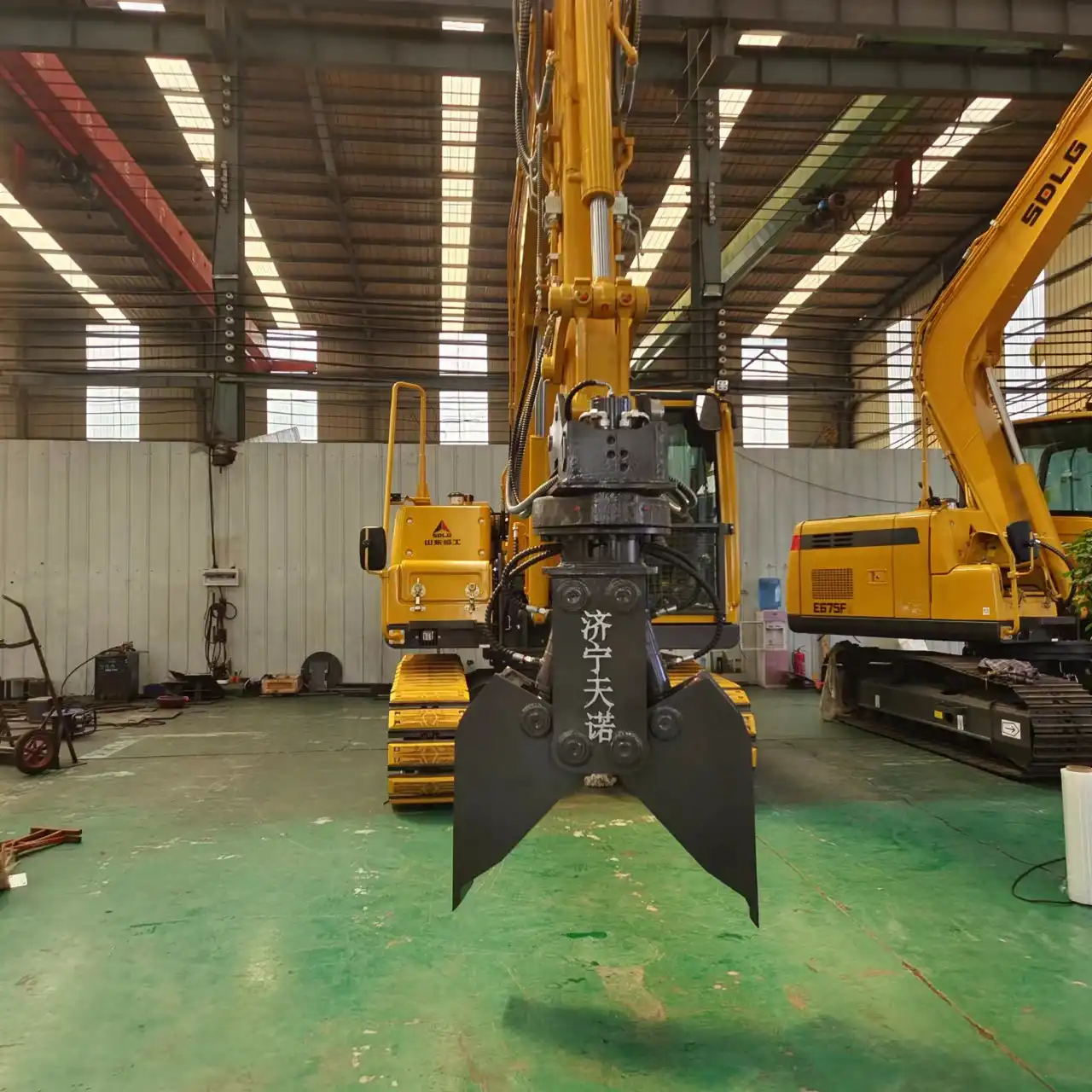What is the function of a rail clamp?
The function of a rail clamp extends far beyond simple attachment mechanisms, serving as the critical interface between excavators and railway infrastructure during maintenance operations. These specialized devices enable excavators to securely attach to rail systems while maintaining the stability and precision required for complex railway maintenance tasks. An excavator rail clamp fundamentally transforms standard construction equipment into specialized railway maintenance machines capable of working directly on active rail lines with unprecedented safety and efficiency.

Securing The Excavator To The Rail
The primary function of securing excavators to rail systems represents a fundamental safety requirement that enables all subsequent maintenance operations. This securing mechanism must provide unwavering attachment strength while accommodating the dynamic forces generated during excavator operation.
Mechanical Attachment Systems
The mechanical attachment system of rail clamps employs sophisticated clamping mechanisms that create secure connections between excavator attachments and rail infrastructure. These systems typically utilize high-strength steel components designed to withstand substantial lateral and vertical forces while maintaining attachment integrity. The excavator rail clamp incorporates multiple contact points that distribute clamping forces across rail surfaces, preventing localized stress concentrations that could damage rail infrastructure.
Professional maintenance crews depend on mechanical attachment systems that provide consistent performance across varying rail conditions and environmental factors. The clamping mechanism must accommodate minor rail irregularities while maintaining secure attachment under dynamic loading conditions. Advanced designs incorporate self-adjusting features that automatically compensate for rail wear and dimensional variations, ensuring reliable attachment regardless of rail condition.
Hydraulic Clamping Control
Hydraulic clamping control systems provide the precise force application necessary for secure rail attachment while preventing over-clamping that could damage rail surfaces. These systems incorporate pressure regulation mechanisms that maintain optimal clamping forces across varying operational conditions. The hydraulic control enables operators to adjust clamping pressure based on rail type, environmental conditions, and specific operational requirements.
Advanced hydraulic systems feature proportional control valves that provide graduated force application, allowing operators to achieve precise clamping pressures suitable for different rail conditions. The system's ability to maintain consistent pressure throughout extended operations ensures reliable attachment even under challenging environmental conditions. This consistency proves essential during critical maintenance operations where attachment failure could result in significant safety hazards.
The integration of hydraulic clamping control with excavator hydraulic systems creates seamless operation that enhances overall efficiency while maintaining safety standards. Modern systems incorporate feedback mechanisms that monitor clamping pressure and provide visual or audible warnings when pressure falls below operational thresholds. This monitoring capability enables proactive maintenance and prevents attachment failures that could compromise safety or operational efficiency.
Load Distribution Mechanisms
Load distribution mechanisms ensure that forces generated during excavator operation are transmitted safely to rail infrastructure without causing damage or instability. These mechanisms typically feature contoured contact surfaces that match standard rail profiles, maximizing contact area while minimizing stress concentrations. The excavator rail clamp design incorporates load distribution features that protect both the attachment mechanism and the rail infrastructure.
The engineering principles underlying load distribution mechanisms require careful analysis of force vectors and stress patterns generated during typical excavator operations. Professional maintenance operations generate substantial forces that must be managed effectively to prevent rail damage or attachment failure. The load distribution system must accommodate both static loads and dynamic forces while maintaining structural integrity throughout the operational cycle.

Ensuring Operational Stability
Operational stability represents a critical function that enables precise excavator control during delicate railway maintenance operations. This stability must be maintained across varying operational conditions while providing the platform necessary for accurate work execution.
Lateral Stability Enhancement
Lateral stability enhancement prevents excavator tipping and maintains operational control during side-loading operations common in railway maintenance. The rail clamp's secure attachment to rail infrastructure provides a stable reference point that resists lateral forces generated during excavator operation. This stability proves essential when working on sloped terrain or when excavator operations generate asymmetric loading conditions.
The lateral stability provided by rail clamps enables excavator operators to work confidently near track edges and in confined spaces where traditional stability methods prove inadequate. Professional maintenance crews appreciate the enhanced stability that allows precise control during delicate operations such as rail adjustment or component replacement. The lateral stability enhancement directly contributes to operational safety by preventing equipment rollover incidents.
Engineering analysis of lateral stability requirements considers the dynamic forces generated during typical excavator operations, including boom extension, bucket loading, and swing operations. The rail clamp must provide sufficient lateral resistance to counteract these forces while maintaining attachment integrity. Advanced designs incorporate multiple attachment points that distribute lateral loads across rail infrastructure, enhancing overall system stability.
Vertical Support Systems
Vertical support systems provided by rail clamps enhance excavator stability by creating additional support points that reduce ground pressure and improve weight distribution. These systems prove particularly valuable when working on soft ground conditions where traditional excavator stability methods may be inadequate. The excavator rail clamp attachment to rail infrastructure provides supplementary support that enables operations in challenging terrain conditions.
The vertical support capability enables excavator operations in locations where ground conditions would otherwise prevent effective equipment deployment. Railway maintenance often requires work in areas with poor soil conditions or limited access where traditional stability methods prove insufficient. The vertical support provided by rail attachment systems expands the operational envelope for excavator-based maintenance operations.
Professional maintenance operations benefit from vertical support systems that maintain excavator stability during extended operations. The consistent support provided by rail attachment reduces operator fatigue and enhances operational precision by eliminating the need for constant stability adjustments. This enhanced stability contributes to improved work quality and operational efficiency during complex maintenance tasks.

Facilitating Rail Maintenance Tasks
The facilitation of rail maintenance tasks represents the ultimate functional objective of rail clamps, enabling efficient execution of complex maintenance operations that would otherwise require extensive manual labor or specialized equipment.
Precision Positioning Capabilities
Precision positioning capabilities enable excavator operators to achieve the exact placement accuracy required for railway maintenance operations. The stable platform provided by rail clamps allows for micro-adjustments that ensure proper component alignment and installation. This precision proves essential for maintaining railway safety standards and operational reliability.
The excavator rail clamp provides the stable reference point necessary for precise positioning operations, enabling operators to achieve millimeter-level accuracy during critical maintenance tasks. Professional maintenance crews depend on this precision for tasks such as rail alignment, joint adjustment, and component replacement. The positioning accuracy directly impacts the quality and longevity of maintenance work.
Advanced positioning capabilities incorporate feedback systems that provide real-time position information, enhancing operator awareness and control precision. These systems enable operators to achieve consistent positioning accuracy regardless of experience level or environmental conditions. The precision positioning capability reduces rework requirements and enhances overall maintenance quality.
Maintenance Access Enhancement
Maintenance access enhancement provided by rail clamps enables excavator operations in confined spaces and challenging locations where traditional maintenance methods prove impractical. The secure attachment to rail infrastructure provides a stable platform that enables access to maintenance points that would otherwise be unreachable. This enhanced access capability expands the scope of maintenance operations that can be performed efficiently.
Railway maintenance often requires work in locations with limited access where traditional equipment cannot operate effectively. The rail clamp's ability to provide stable attachment points enables maintenance operations in these challenging environments while maintaining safety standards. Professional maintenance crews appreciate the enhanced access capability that reduces manual labor requirements and improves operational efficiency.
The maintenance access enhancement capability proves particularly valuable for emergency repairs where rapid access to maintenance points is critical. The ability to quickly establish stable working platforms enables rapid response to infrastructure failures, minimizing service disruptions and maintaining operational continuity. This capability contributes significantly to overall railway system reliability.
FAQ
①What is the primary function of an excavator rail clamp?
The primary function is to securely attach excavators to rail infrastructure, providing stable platforms for precise railway maintenance operations while ensuring safety and operational stability.
②How do rail clamps enhance excavator stability?
Rail clamps provide additional support points that distribute loads across rail infrastructure, preventing tipping and maintaining operational control during challenging maintenance tasks.
③What maintenance tasks are facilitated by rail clamps?
Rail clamps facilitate precision positioning, enhanced access to maintenance points, and improved operational efficiency for tasks including rail alignment, component replacement, and infrastructure repairs.
④How do rail clamps prevent damage to rail infrastructure?
Rail clamps incorporate load distribution mechanisms and pressure control systems that prevent localized stress concentrations while maintaining secure attachment to rail systems.
⑤What safety features are included in modern rail clamps?
Modern excavator rail clamps include locking pins, pressure hold valves, and monitoring systems that ensure secure attachment and prevent accidental release during operations.
TianNuo's excavator rail clamp systems exemplify the pinnacle of railway maintenance technology, incorporating high-strength alloy steel construction with customizable hydraulic or manual operation modes. Our rail clamps provide adjustable clamping forces up to 30 kN, ensuring secure attachment across diverse rail conditions while maintaining the precision necessary for detailed maintenance work. The standard 1435mm gauge compatibility, with custom options available, ensures broad applicability across various railway systems.
Railway maintenance professionals seeking to enhance their operational capabilities will find our rail clamp systems provide exceptional value through improved efficiency, enhanced safety, and reliable performance. The comprehensive functionality that includes secure attachment, operational stability, and maintenance facilitation makes these systems essential tools for modern railway operations. For detailed technical specifications and consultation on selecting the optimal rail clamp configuration for your specific maintenance requirements, contact our technical team at raymiao@stnd-machinery.com.
References
- International Railway Journal. "Advanced Rail Clamp Technologies for Modern Railway Maintenance Operations." Railway Engineering International, 2024.
- Peterson, D.R. "Excavator Attachment Systems for Railway Infrastructure: Functional Analysis and Safety Considerations." Journal of Railway Engineering, 2023.
- European Railway Agency. "Technical Standards for Rail Clamp Systems and Operational Safety Requirements." Railway Safety Standards, 2024.
- Matthews, K.L. "Operational Stability Enhancement Through Rail Clamp Utilization in Railway Maintenance." Transportation Engineering Quarterly, 2023.
- Railway Maintenance Institute. "Best Practices for Rail Clamp Operation and Maintenance Task Facilitation." Professional Railway Maintenance Manual, 2024.
About Author: Arm
Arm is a leading expert in the field of specialized construction and railway maintenance equipment, working at Tiannuo Company.

